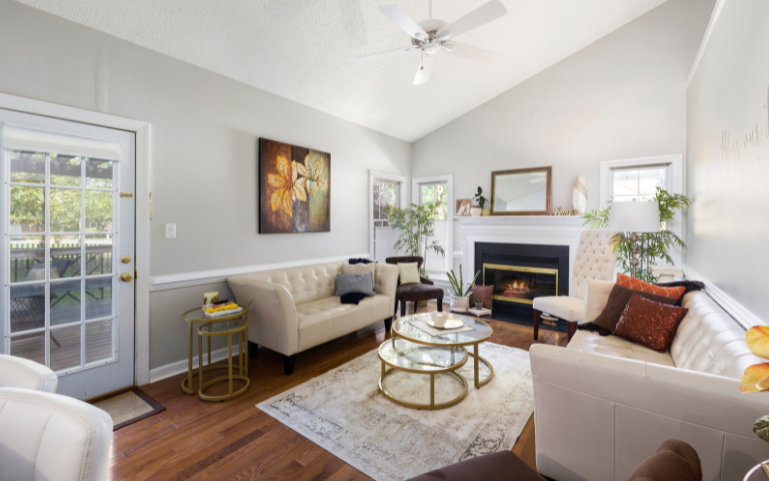
Architectural Innovations: Exploring the Latest Trends in Home Design
n the ever-evolving world of architecture, staying ahead of design trends is crucial for creating homes that are not only functional but also aesthetically pleasing and future-ready.
In the ever-evolving world of architecture, staying ahead of design trends is crucial for creating homes that are not only functional but also aesthetically pleasing and future-ready. Architectural innovations continue to push the boundaries of traditional design, incorporating new technologies, materials, and concepts to shape modern living spaces. In this blog, we’ll explore some of the latest trends in home design that are transforming the way we build and experience our homes.
1. Sustainable Design and Green Building
Sustainability remains at the forefront of architectural innovations. Modern home design increasingly focuses on eco-friendly practices and materials that reduce environmental impact. Key trends include:
- Energy-Efficient Systems: Incorporating advanced insulation, high-performance windows, and energy-efficient HVAC systems to reduce energy consumption and lower utility bills.
- Renewable Energy Sources: Integrating solar panels, wind turbines, and geothermal systems to provide clean, renewable energy for homes.
- Sustainable Materials: Using materials such as reclaimed wood, bamboo, and recycled metal that have a lower environmental footprint.
2. Smart Home Technology
The integration of smart technology into home design is revolutionizing how we interact with our living spaces. Some prominent trends include:
- Home Automation: Smart thermostats, lighting, and security systems that can be controlled remotely via smartphones or voice assistants, enhancing convenience and security.
- Energy Management: Intelligent systems that monitor and optimize energy use, helping homeowners save on utility costs while reducing their carbon footprint.
- IoT Integration: Devices connected through the Internet of Things (IoT) that allow for seamless communication between home appliances and systems.
3. Minimalist and Open-Concept Design
Minimalism and open-concept design continue to be popular in modern home architecture. These trends emphasize simplicity and functionality:
- Open Floor Plans: Creating fluid and interconnected spaces that promote a sense of openness and enhance natural light flow.
- Streamlined Aesthetics: Using clean lines, neutral color palettes, and minimalistic décor to create uncluttered, tranquil environments.
- Multifunctional Spaces: Designing rooms that serve multiple purposes, such as home offices that double as guest rooms, to maximize space efficiency.
4. Biophilic Design
Biophilic design seeks to connect people with nature, integrating natural elements into the built environment. Key features include:
- Indoor Greenery: Incorporating plants and green walls to improve air quality and create a calming atmosphere.
- Natural Light: Maximizing the use of natural light through large windows, skylights, and open spaces that bring the outdoors inside.
- Organic Materials: Using materials such as wood, stone, and water features to create a soothing and nature-inspired ambiance.
5. Adaptive Reuse and Repurposing
Adaptive reuse involves transforming existing structures for new purposes, blending historic charm with modern functionality:
- Historic Preservation: Renovating and repurposing old buildings to retain their historical value while meeting contemporary needs.
- Creative Conversion: Converting warehouses, factories, and other non-residential structures into unique homes, offices, or community spaces.
- Sustainable Repurposing: Reducing waste and conserving resources by reusing existing materials and structures in new projects.
6. Modular and Prefabricated Construction
Modular and prefabricated construction methods are gaining popularity for their efficiency and flexibility:
- Modular Homes: Pre-fabricated modules are assembled on-site to create custom-designed homes that can be built faster and more cost-effectively.
- Prefabricated Components: Building components such as walls, roofs, and floors are manufactured off-site and then assembled at the construction site, reducing construction time and waste.
7. Personalized and Custom Designs
Personalization and customization allow homeowners to create spaces that reflect their unique tastes and lifestyles:
- Custom Finishes: Tailoring finishes, fixtures, and layouts to meet individual preferences and functional requirements.
- Personalized Spaces: Designing spaces that cater to specific needs, such as home gyms, entertainment rooms, or hobby areas.
- Interactive Design: Collaborating with architects and designers to create bespoke solutions that enhance the overall living experience.
Conclusion: Embracing Innovation in Home Design
Architectural innovations are reshaping the way we design and experience our homes, blending sustainability, technology, and personalization to create spaces that are not only beautiful but also functional and future-proof. By staying informed about the latest trends and incorporating these innovations into home design, architects and homeowners alike can contribute to a more sustainable, efficient, and enjoyable living environment. As we continue to push the boundaries of design, the possibilities for creating exceptional homes are endless.

